Hey, let’s get started on crafting a wildlife-friendly garden that boosts your local ecosystem. First, focus on native plants, ones naturally suited to your area’s climate and soil, like selecting milkweed for monarch butterflies. These plants need less water, often just 1-2 inches weekly, and thrive without much fuss. Curious about which species to pick for your yard? Stick around to uncover the best choices for inviting nature in.
Contents
Native Plant Selection
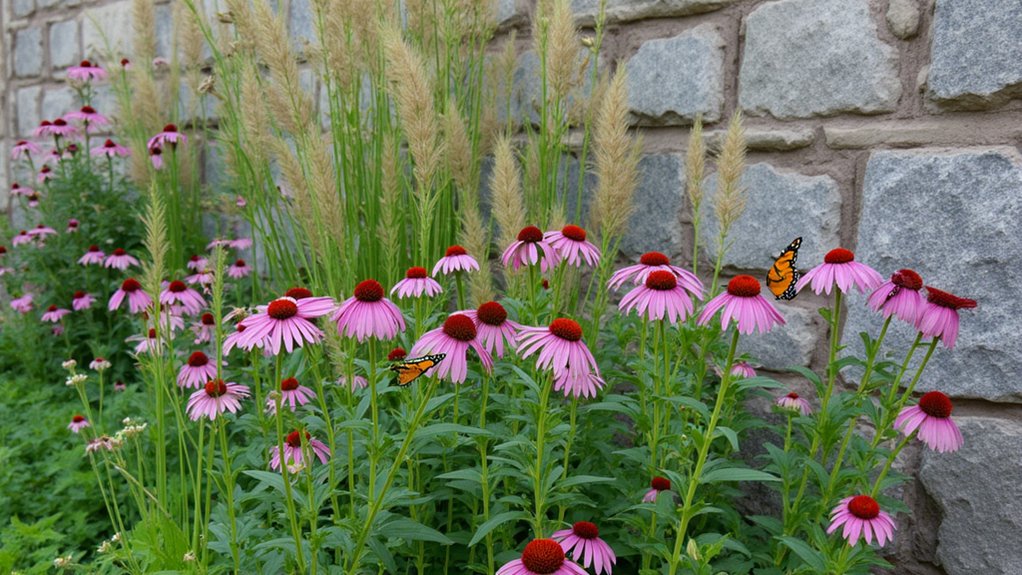
Although it might seem tricky at first, choosing native plants for your wildlife-friendly garden is a smart move. You’re not just planting greenery; you’re supporting local ecosystems with species that thrive naturally. Let’s get started, shall we?
First, check your region’s native plant list, often available through local extension offices or online databases. Focus on shrubs, grasses, and trees adapted to your climate, like those needing minimal water if you’re in a dry area. Research their growth habits—some spread fast, up to 3 feet yearly!
Next, plan your layout. Place taller plants, say 5-10 feet at maturity, in the back, and shorter ones upfront. Buy from local nurseries within a 50-mile radius for best results. You’ve got this!
Choosing Native Flowers
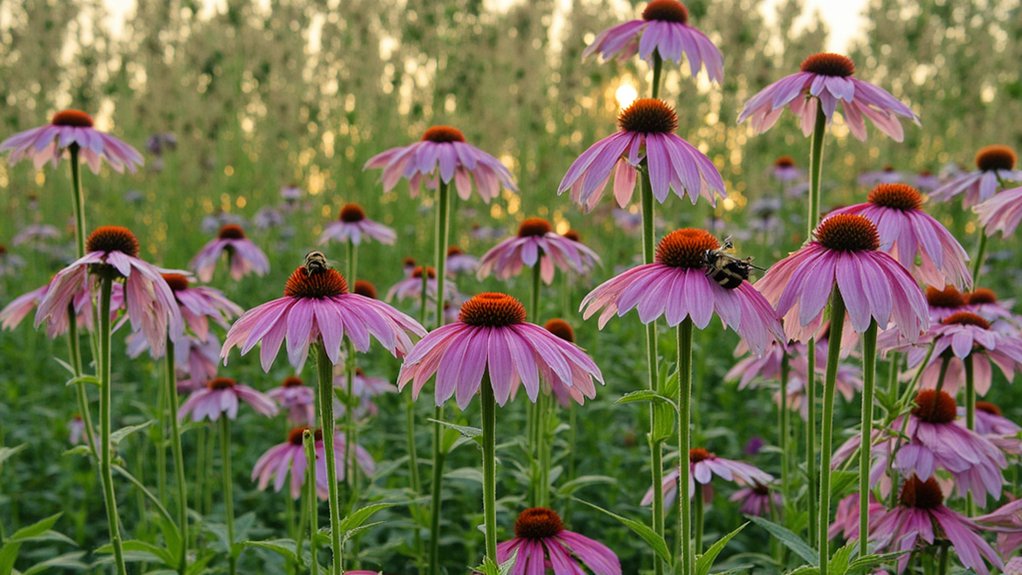
Since you’ve tackled native plant selection, let’s explore picking native flowers for your wildlife-friendly garden. These blooms aren’t just pretty; they’re essential for local pollinators like bees and butterflies. Start by researching species native to your region, using resources like local extension offices.
Next, check bloom times to verify year-round food sources. For instance, plant early bloomers like columbine, which flowers in spring around April, alongside late-season options like goldenrod, peaking in September. Aim for a mix of colors and shapes to attract diverse wildlife.
Finally, buy from local nurseries to ensure authenticity, and plant in clusters of at least 3-5 flowers, spacing them 12-18 inches apart for visibility. You’ll create a buzzing, thriving habitat with these steps!
Planting Native Shrubs
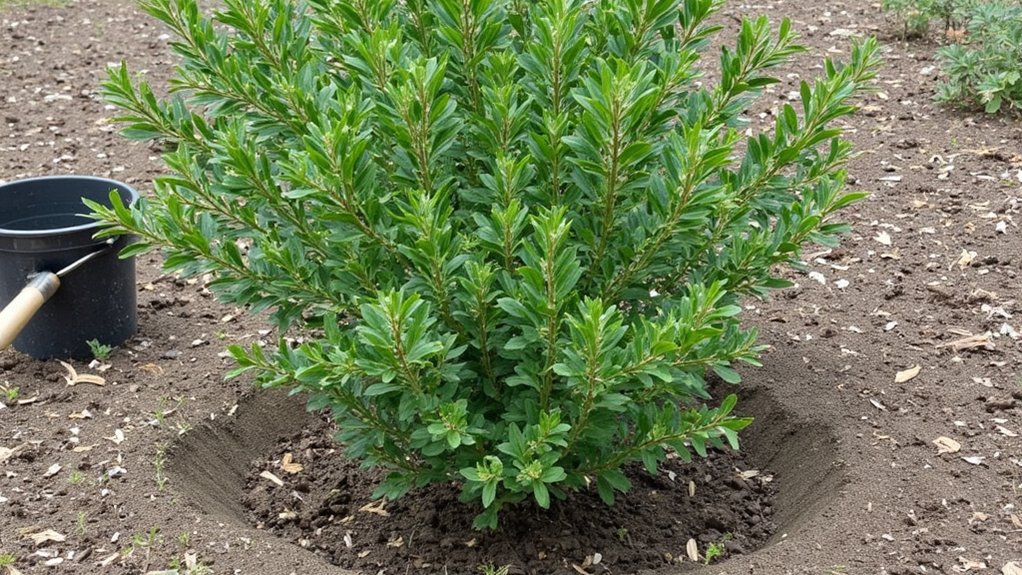
As you’re building your wildlife-friendly garden, let’s plunge into planting native shrubs, a key step for added structure. These plants, often 3 to 10 feet tall, provide shelter and food for local critters. They’re tough, too, adapted to your region’s climate.
Start by researching shrubs native to your area, like elderberry or spicebush, depending on your zone. Check local nurseries for healthy plants, ideally in 1-gallon pots for easier planting. Dig a hole twice as wide as the pot, about 12-18 inches deep, then place the shrub, backfill with soil, and water it well.
Space them 4-6 feet apart for growth. Mulch around the base, using 2-3 inches of bark, to retain moisture. Keep watering weekly for the first month.
Installing Bird Feeders
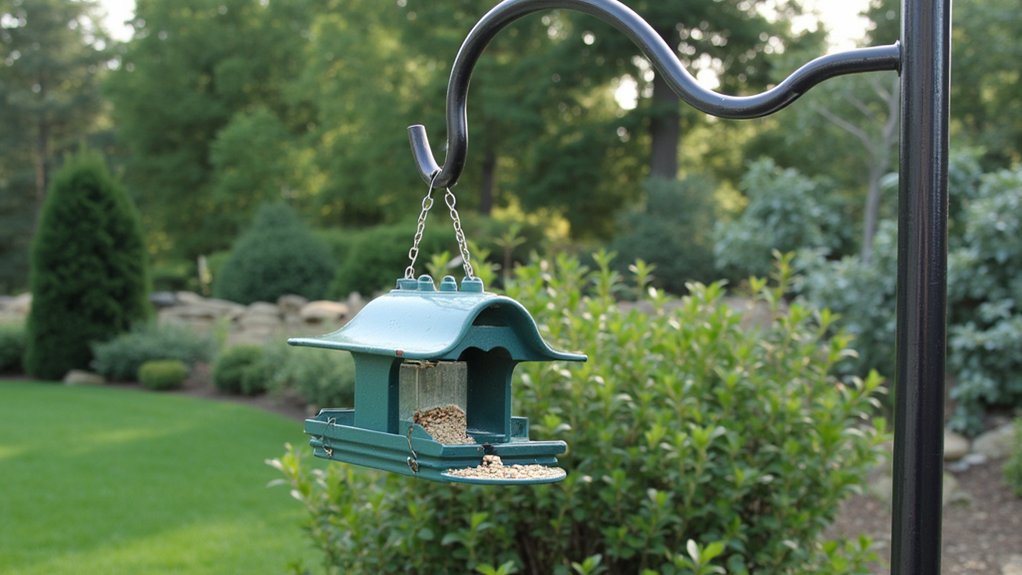
Let’s dive right into installing bird feeders, a fantastic way to attract feathered friends to your wildlife-friendly garden. You’ve got to start by picking the right feeder, like a tube or platform style, based on local birds.
First, scout a spot that’s visible from your window, yet safe, about 10-12 feet from shrubs for predator cover. Hang it at least 5 feet off the ground, using a sturdy pole or hook, and secure it tight.
Next, fill it with quality seed, such as black oil sunflower, which many species love. Check it every 3-4 days, refilling as needed, and clean it monthly with soapy water to prevent mold. Keep at it, and you’ll soon spot winged visitors!
Building Nesting Boxes

Ready to boost your garden’s appeal for birds? Building nesting boxes is a fantastic way to invite feathered friends. You’ll provide safe spots for them to raise their young, right in your backyard.
Start with a simple design using untreated wood, like cedar, for durability. Cut a rectangular front panel, 6 inches wide by 10 inches tall, and a matching back. Make two side pieces, 6 inches wide by 8 inches tall, slanting the top for a roof. Assemble with galvanized screws, and drill a 1.5-inch entrance hole, 2 inches from the top.
Place the box 5-10 feet off the ground, facing away from harsh winds. Mount it on a pole or tree by early spring. You’ve got this!
Adding Water Features
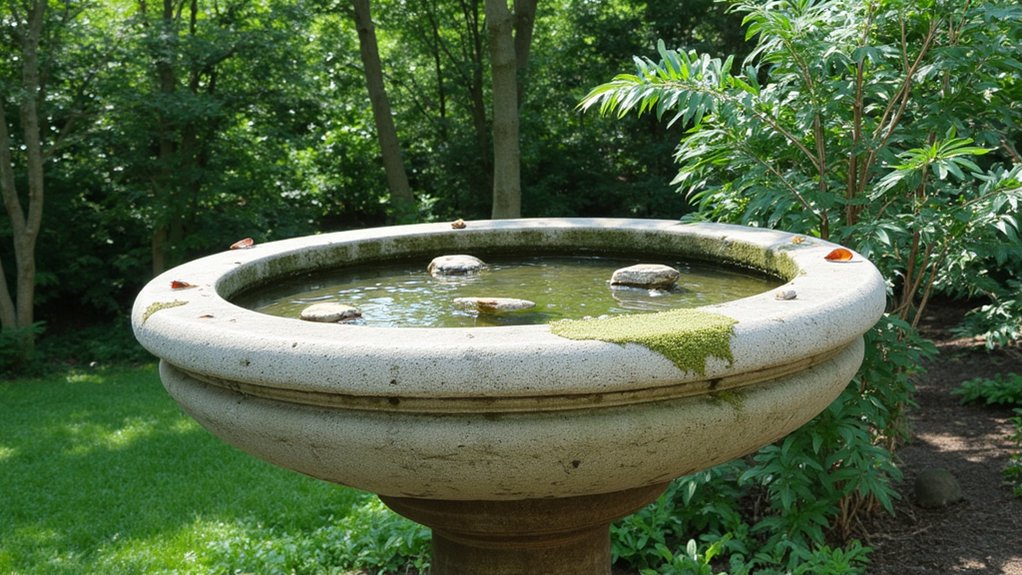
While you’re enhancing your garden for wildlife, consider adding a water feature to attract birds and other critters. It’s a simple way to boost biodiversity right in your backyard. A small birdbath, about 18-24 inches wide, works wonders if placed in a quiet, shaded spot. Make sure it’s no deeper than 2 inches, so smaller birds can bathe safely.
Now, let’s talk maintenance to keep it inviting. Clean the water every 2-3 days, scrubbing away algae with a brush, and refill it with fresh water. If you’re feeling creative, add a few flat rocks for perching. For a bigger impact, install a shallow pond, roughly 3 feet across, with gently sloping edges for easy access by amphibians and insects.
Creating Pollinator Habitats
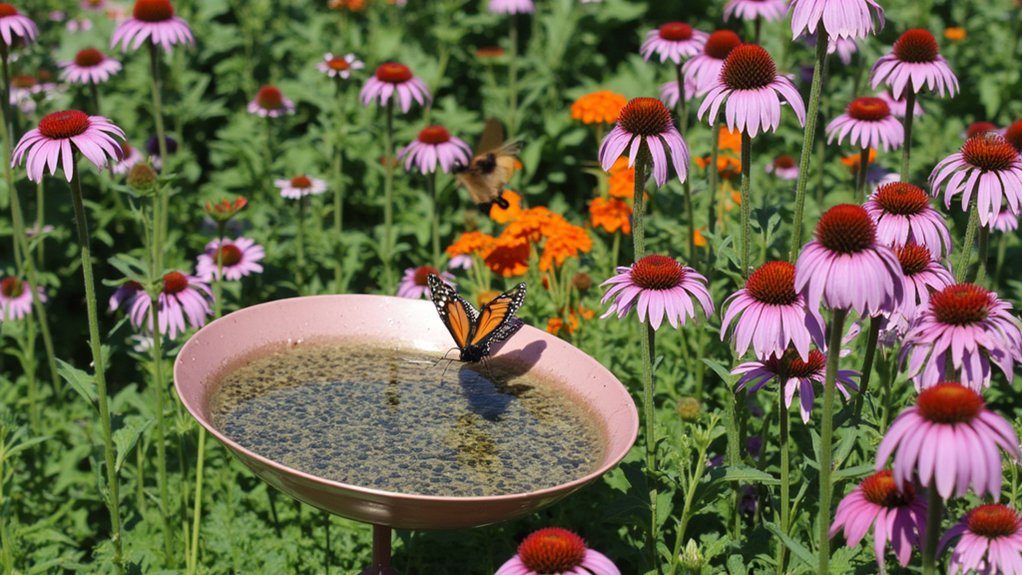
Moving from water features to another key aspect, think about drawing in pollinators like bees, butterflies, and hummingbirds with dedicated habitats. You’ve gotta create spaces that offer food and shelter. Start by planting native flowers—think milkweed for butterflies or bee balm for bees—in clusters of at least 3 square feet.
Next, guarantee blooms throughout the seasons. Aim for early spring flowers like crocuses, summer options like coneflowers, and late fall picks like asters. This way, pollinators always find nectar.
Also, set up shallow water dishes with pebbles for safe drinking spots, revitalizing them every 2-3 days. Place these near flowers, ideally in sunny areas. With these steps, you’re building a haven that keeps pollinators buzzing around your garden all year.
Constructing Insect Hotels
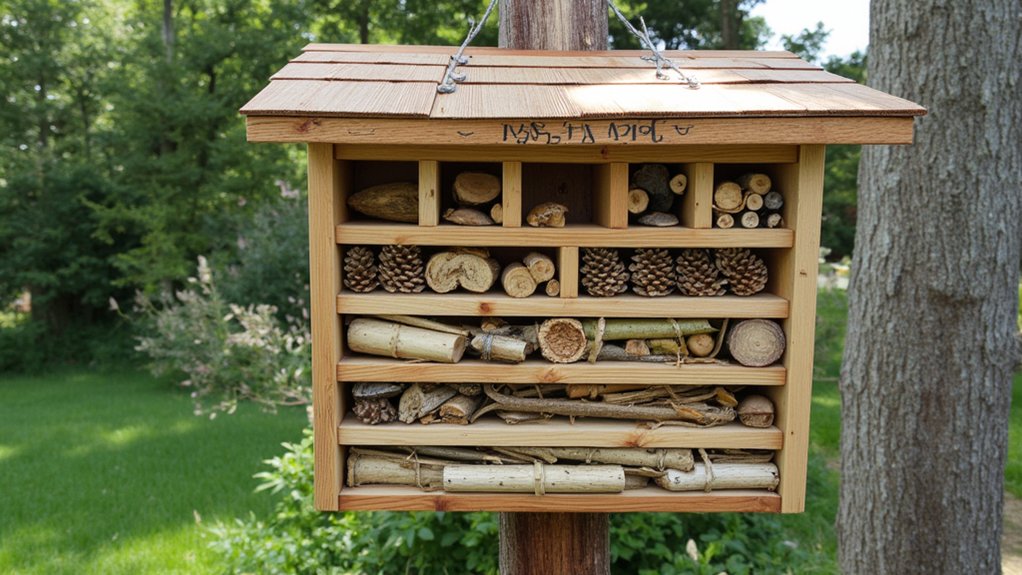
As you continue enhancing your wildlife-friendly garden, let’s immerse ourselves in building insect hotels for beneficial bugs. These little shelters attract pollinators and pest controllers, like ladybugs and lacewings, boosting your garden’s health.
Start by gathering natural materials, such as twigs, pinecones, and hollow bamboo canes. Find a small wooden box, about 12 inches tall and wide, or stack old pallets for a frame. Fill sections with your materials, creating tiny nooks—think 2- to 6-inch tubes for solitary bees.
Place your insect hotel in a sunny, sheltered spot, ideally 3 feet off the ground, facing south for warmth. Secure it firmly, maybe on a post, to avoid toppling. Check it yearly, replacing rotted bits, and watch bugs move in fast!
Providing Bat Houses

Now that you’ve tackled insect hotels, let’s plunge into setting up bat houses to welcome these night-flying helpers. Bats are awesome at controlling pests, munching thousands of insects nightly. So, why not invite them over?
Start by picking a spot 10-20 feet off the ground, ideally on a pole or tree, facing southeast for morning sun. Make sure it’s near trees or water, as bats love these hangouts for foraging. Avoid bright lights nearby; they’ll spook your guests.
Next, buy or build a bat house—look for one at least 2 feet tall, with a ¾-inch entry slit. Mount it securely by late winter, before bats return in spring. Check local bat species needs, and you’re set!
Minimizing Lawn Size
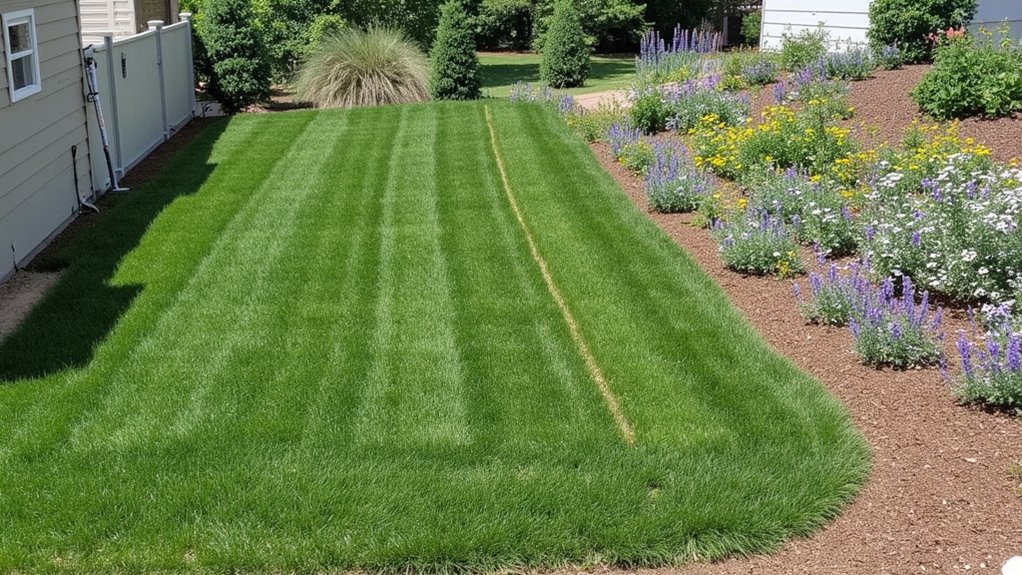
Let’s shift our focus from bat houses to rethinking your yard’s layout by minimizing lawn size. Large lawns, while pretty, demand water and upkeep, often offering little for wildlife. You can make a difference by reducing that space.
Start by measuring your yard—aim to shrink the lawn to 25% of its current size. Replace grass with native plants or ground covers like clover, which need less mowing. Mark out sections, say 10×10 feet, and dig them up over a weekend.
Next, add mulch to prevent weeds, spreading a 2-inch layer around new plantings. You’ll save time on maintenance and create habitats for pollinators. Keep at it, adjusting yearly, and watch your garden thrive with local critters.
